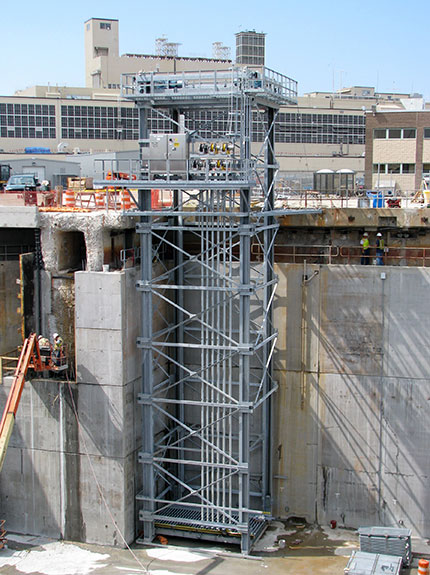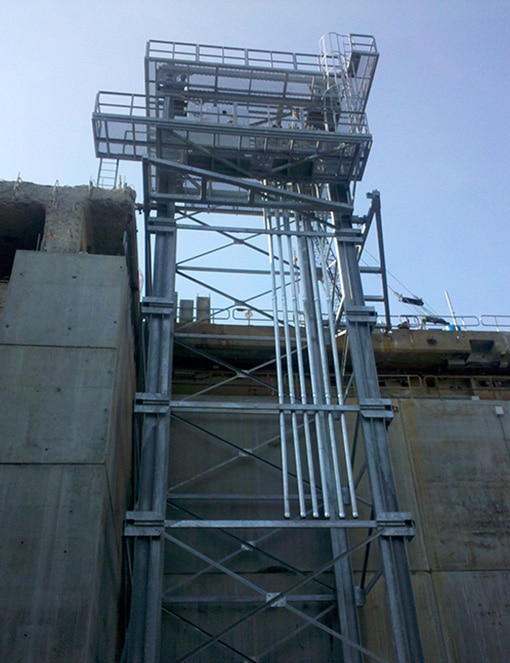Search Knowledge Base by Keyword
-
Case Studies
- A Sugary Sweet Lifting Solution for Peeps & Company Retail Store
- Bayside Harley’s Product Showcase and PFlow Bring in the Riders
- Books Arrive in Underground Archive with the Help of a PFlow Conveyor
- Creative Design Highlights Vertical Conveyor at Laminated Glass Plant
- Custom Designed Hydraulic VRCs Help Maximize Space at Tyson Foods
- Custom Designed PFlow F Series Assists with Funeral Services
- Custom PFlow Lift Helps Create 9,600 SF of Storage within Existing Building
- Everything is Bigger In Texas – Including the PFlow M Series VRC!
- For Moving Fragile Cargo, Boeing Called PFlow Industries
- FuelCell Energy Loads Components with the Help of PFlow Material Lifts
- Georgia Pacific Moves Finished Product with the PFlow M Series
- Global Logistics Leader Doubles Productivity with PFlow Lifts
- Gravity Makes the Wine, PFlow Vertical Lift Takes Care of the Rest
- Historic Pritzlaff Building Repurposed Into Popular Event Venue with Assist from PFlow Hydraulic VRCs
- Liberated By Upward Mobility
- Manufacturing Plant Replaces 10-ton, 200′ Hoist with PFlow Vertical Lift
- Merged Controls of PFlow Lift and Laundry Cart Washer Regulate the Flow of the Entire System
- Milwaukee Waterfront Deli and PFlow Deliver
- Moving at the Speed of Fashion
- Moving-Floor Assembly Line Streamlines Implement Production
- PFlow and Parking Vault are Solving Major Parking Needs
- PFlow Automated System Provides Continuous 2-Way Pallet Flow
- PFlow Corners the Market for 'Big,' Heavy-Duty Material Lifts
- PFlow Designs Lift for Underground Parking at a Lake Tahoe Home
- PFlow F Series Helps Retailer Utilize Difficult-to-Access Space
- PFlow Galvanizing Provides a Protective Coat for Juice Plant Lift
- PFlow Heliport Lift Helps Offshore Oil Platform
- PFlow Helps Repurpose Restaurant into Government Service Facility
- PFlow Hydraulically Powers the Upward Expansion at Alcom Electronicos Reynosa Facility
- PFlow Lift Integrates Perfectly with 10-Story Power Plant Tower
- PFlow Moving Concourse Helps 'Big Bertha' March Into College Stadium
- PFlow Navigates Uncharted Territory with Vertical Lift at Naval Drydock
- PFlow Pallet Elevator is the Vertical Lift Solution for Nutrilite Warehouse
- PFlow Provides Steady Travel for Lockheed Martin Missile Plant
- PFlow Retrofits 2 Lifts in Single Shaft to Keep Hospital Supplies Moving
- PFlow Screw Lift Provides a Safe and Controlled Movement of Satellites
- PFlow System is an Integral Part of the Paper Production Line
- PFlow VRC Keeps the Pipeline Full for Large Pharmaceutical Distributor
- PFlow VRCs Help Keep the Beer Crisp and Chilled at NFL Stadium
- PFlow VRCs Installed in Concrete Shaft Ways of Seattle Tunnel Project
- PFlow VRCs Provide Vertical Logistics at High Rise Audi Dealership
- Stage Lifts Spirits – and Nascar Vehicle
- Tower Above the Competition with a PFlow Vehicle Display System
- Unique Lift System Enables Installation and Servicing of Telescope Mirrors
- Show all articles ( 29 ) Collapse Articles
-
Preventive Maintenance
- 21 Series Hydraulic Lift - Preventive Maintenance Checklist
- B Series Box Lift - Preventive Maintenance Checklist
- D Series Hydraulic Lift - Preventive Maintenance Checklist
- DB Series Package Handling Lift - Preventive Maintenance Checklist
- F Series 4-Post Mechanical Lift - Preventive Maintenance List
- M and MQ Series Mechanical Lifts - Preventive Maintenance Checklist
-
Service Bulletins
-
Installation Manuals
-
- 15709-0005 - Gate Installation - Sliding - Swing - Bi-Parting
- 15709-0014 - Gate Installation - Bi-Panel Vertical Acting
- 15709-0120 - Gate Installation - Floor Level Swing with Sliding Latch
- 15709-0126 - Gate Installation - Floor Level Bi-Swing with Sliding Latch
- 15709-0133 - Gate Installation - Motorized Single Vertical Acting
- 15709-0143 - Gate Installation - Motorized Bi-Panel Vertical Acting
- 15709-0156 - Gate Installation - Single Vertical Acting
- 15709-0157 - Gate Installation - Carriage Mounted Single Vertical Acting
- 21 Series Hydraulic Lift - Cantilever Style - Installation Manual
- 21 Series Hydraulic Lift - Cantilever Style with Roller Guides - Installation Manual
- 21 Series Hydraulic Lift - Straddle Style - Installation Manual
- 21 Series Hydraulic Lift- Straddle Style with Twin Roller Guides - Installation Manual
- D Series Hydraulic - Installation Manual
- F Series 4-Post Mechanical Lift - Installation Manual
- F Series 4-Post Mechanical Lift - Installation Manual with Twin Roller Guides
- M Series - Straddle - Twin Roller Guides - Installation Guide
- M Series 2-Post Mechanical - Cantilever Design - Roller Guides - Installation Manual
- M Series 2-Post Mechanical Lift - Cantilever Design - Installation Manual
- M Series 2-Post Mechanical Lift - Straddle Design - Installation Manual
- MQ Series 2-Post Mechanical Lift - Cantilever Style - Installation Manual
- MQ Series 2-Post Mechanical Lift - Straddle Design - Installation Manual
-
-
Owner's Product Manuals
- 21 Series Hydraulic Lift - Owner's Manual
- 21 Series with Roller Guides Owners Manual
- B Series Box Lift - Owner's Manual
- D Series Hydraulic Vertical Lift Owners Manual
- DB Series Package Handling Lift - Owners Manual
- F Series 4-Post Mechanical Lift Owners Manual
- F Series 4-Post Mechanical Owner's Manual - Eurodrive - Twin Roller Guides
- F Series 4-Post Mechanical Owner's Manual - NORD - Twin Roller Guides
- M Series - Eurodrive - Roller Guides - Owners Manual
- M Series - NORD Drive - Roller Guides - Owner's Manual
- M Series 2-Post Mechanical Lift Owner's Manual - Nord Motordrive
- M Series 2-Post Mechanical VRC Owner's Manual - Eurodrive
- MQ Series - NORD Drive - Owners Manual
- MQ Series – Eurodrive – Roller Guides – Owner’s Manual
- MQ Series – NORD Drive - Roller Guides – Owner’s Manual
- MQ Series 2-Post Mechanical Lift Owner's Manual - Eurodrive
- MQ Series 2-Post Mechanical Lift Owner's Manual - Nord Motordrive
- Show all articles ( 2 ) Collapse Articles
-
Dimensional Schematics
- 21 Series CSI Spec - No Quick Connect
- 21 Series CSI Spec - Quick Connect
- 21 Series Hydraulic Lift - Cantilever Style - Dimensional Schematic
- 21 Series Hydraulic Lift - Straddle Style - Dimensional Schematic
- 21 Series, Cantilever, CAD Drawing
- 21 Series, Straddle, CAD Drawing
- B Series Box Lift - Dimensional Schematic
- Bi-Panel Swing Gate Dimensions
- Bi-Panel Vertical Gate Dimensions
- D Series CAD Drawing
- D Series CSI Spec - No Quick Connect
- D Series CSI Spec - Quick Connect
- D Series Hydraulic Lift- Dimensions Schematic
- DB Series CAD Drawing
- DB1 Series Package Handling Lift - Dimensional Schematic
- DB2 Series Package Handling Lift - Dimensional Schematic
- F Series 4-Post Mechanical Lift - Dimensions Schematic
- F Series CAD Drawing
- F Series CSI Spec
- M Series 2-Post Mechanical Lift - Cantilever Style - Dimensions Schematic
- M Series 2-Post Mechanical Lift - Straddle Style - Dimensional Schematic
- M Series CSI Spec
- M Series, Cantilever, CAD Drawing
- M Series, Straddle, CAD Drawing
- Single Panel Vertical Gate Dimensions
- Single Sliding Gate Dimension
- Single Swing Gate Dimensions
- Show all articles ( 12 ) Collapse Articles
-
Applications
-
Videos
PFlow Navigates Uncharted Territory with Vertical Lift at Naval Drydock
At just over 1,092 feet in length, Dock #8 is the largest of the seven drydocks at the Norfolk Naval Shipyard (NNSY) in Portsmouth, Va. Opened in 1942, it is also the newest to hold aircraft carriers, the largest ships in the naval fleet and among the largest mobile objects of any kind in the world.
As part of a refurbishment, Dock #8 added a large, intricately designed vertical reciprocating conveyor (also known as a VRC or vertical lift) made by PFlow Industries. The US Navy commissioned the VRC to move materials and equipment used to build, repair and modernize the Navy’s largest ships to and from the top and bottom of the drydock.
Project Overview
Portsmouth, Virginia
Naval Shipyard
- F Series 4-Post Mechanical Lift
- Lifts Loads up to 25,000 lbs
- 52’ Vertical Rise
- 2 Levels of Vertical Rise
- 30 FPM Travel speed

Structural Integrity
Due to the harsh marine environment, every metal part was hot-dip galvanized (HDG), and most non-metal parts are polycarbonate, UV resistant plastic. All other components, including controls, cables and electronics were designed and specified to withstand extensive saltwater exposure.
The entire lift is a completely bolt-together structure, with no major structural welds. This 1) helped to transport the lift in assembly-ready pieces from the PFlow Milwaukee production facility to Norfolk, 2) allowed the largest metal parts to be small enough for the HDG process, and 3) significantly enhanced the VRC’s structural strength without adding excessive rigidity.
Depending on the ship or the area of the ship being worked on, there are two alternate positions within the dock where the VRC can be positioned. When a ship enters and exits the dock, the VRC is designed to be lifted out of the dock. This requires the 40-ton unit to be structurally secure enough to be lifted as a single piece by a crane and moved from one position to the other or out of the drydock entirely. The selection of the appropriate steel; the number, grade and position of the bolts; and the installation of the controls and moving parts had to be flawlessly designed and executed.
Design Innovation

The drydock can then be flooded with 50’ of water and the VRC will be operable once the ship has entered, the dock is drained, and the components reattached. The top section of the VRC can be lifted and removed for easier maintenance on the motors, gearboxes and other components that drive the lift. A catwalk is installed at the very top of the lift for access to these parts for more routine maintenance.
Loads are placed on a heavy duty metal pallet and moved on and off the VRC platform on both levels via chain driven live roller (CDLR) conveyors that extend from the lift at both levels. The actual lift platform also has a CDLR conveyor with photo eyes that control the movement of the load to assure that it is securely positioned in the middle of the platform. A scale verifies that the load is within the weight limit and tie-down rings and straps on the metal pallet can be used to hold the load in place.
Panels at both levels house the individual controls that begin the movement of the rollers and initiate the vertical movement of the platform. A navy phone with hand powered crank is also installed at both levels to allow operators at each level to communicate as needed.
Engineering Sophistication
PFlow created and refined the entire design on SolidWorks utilizing Solid Modeling techniques. Solid Modeling allows for 3D exploded views of all areas of the VRC structure, and automates many difficult engineering tasks and calculations.
“This system was designed from the ground up using SolidWorks solid modeling software. Using the 3D model PFlow engineers were better able to visualize the relationships between the many components of the system including the drydock itself, reducing or eliminating potential errors due to interference between the components. The ability to quickly convey concepts during design review meetings and the ability to make changes on the fly to a very complex design resulted in a more refined design that was completed in a fraction of the time it would have taken using conventional 2D CAD.”
Mark Webster, PE, VP of Engineering, PFlow Industries
